Achieving results in skin pigmentation treatments at home
Spots and pigmentation problems are considered as some of the most complex challenges in dermatology. in dermatological The good news is that recent years have brought about a revolution in the field, and there are innovative treatments that make it possible to achieve significant improvements. These treatments, some of which are home care preparations, are based on materials and technologies that influence the pigment production mechanisms very efficiently and in a relatively short time.
The appearance of pigmentation spots on the skin is closely related to the changes that occur in melanin, a pigment that determines the color of the skin. Melanin is formed by the melanocyte cells, which are located in the bottom layer of the epidermis. These cells produce small corpuscles called melanosomes, which contain melanin grains. As melanosomes grow and develop, they are transferred from the melanocytes through long extensions into cells in the epidermis (keratinocytes), where they swell and give the skin its color. One melanocyte cell supplies melanosomes to dozens of keratinocyte cells in the epidermis. The small packets of melanin pigment position themselves around the cell nucleus on the side facing the skin surface, thus protecting the cells’ DNA from the sun’s harmful ionizing radiation. Due to their unique structure, melanin molecules can efficiently absorb radiation at short wavelengths, such as harmful UV radiation, and they convert energy into harmless temperatures. In this way, they scatter more than 99.9% of the absorbed ultraviolet radiation as heat, prevent direct DNA damage, and protect skin cells and skin tissue.
The enzyme responsible for producing melanin is tyrosinase, which produces it from the amino acid called tyrosine. When we are exposed to the sun, the tyrosinase accelerates the production of melanin in melanocyte cells to protect the skin, resulting in darker skin. The problem is that the pigment particles are not always uniformly dispersed, and sometimes the pigment particles accumulate in a specific area, thus creating skin spots or areas of hyper-pigmentation. As exposure to the sun continues and accumulates, the spots and hyper-pigmentation areas multiply and become more permanent, severe, and prominent. Inhibiting the formation of tyrosinase in the skin can therefore inhibit the formation of melanin, thus influence the process of pigmentation.
To achieve significant results in lightening pigmentation spots, it is recommended to combine professional treatment with home treatment, using the DERMALIGHT series from HL Laboratories.
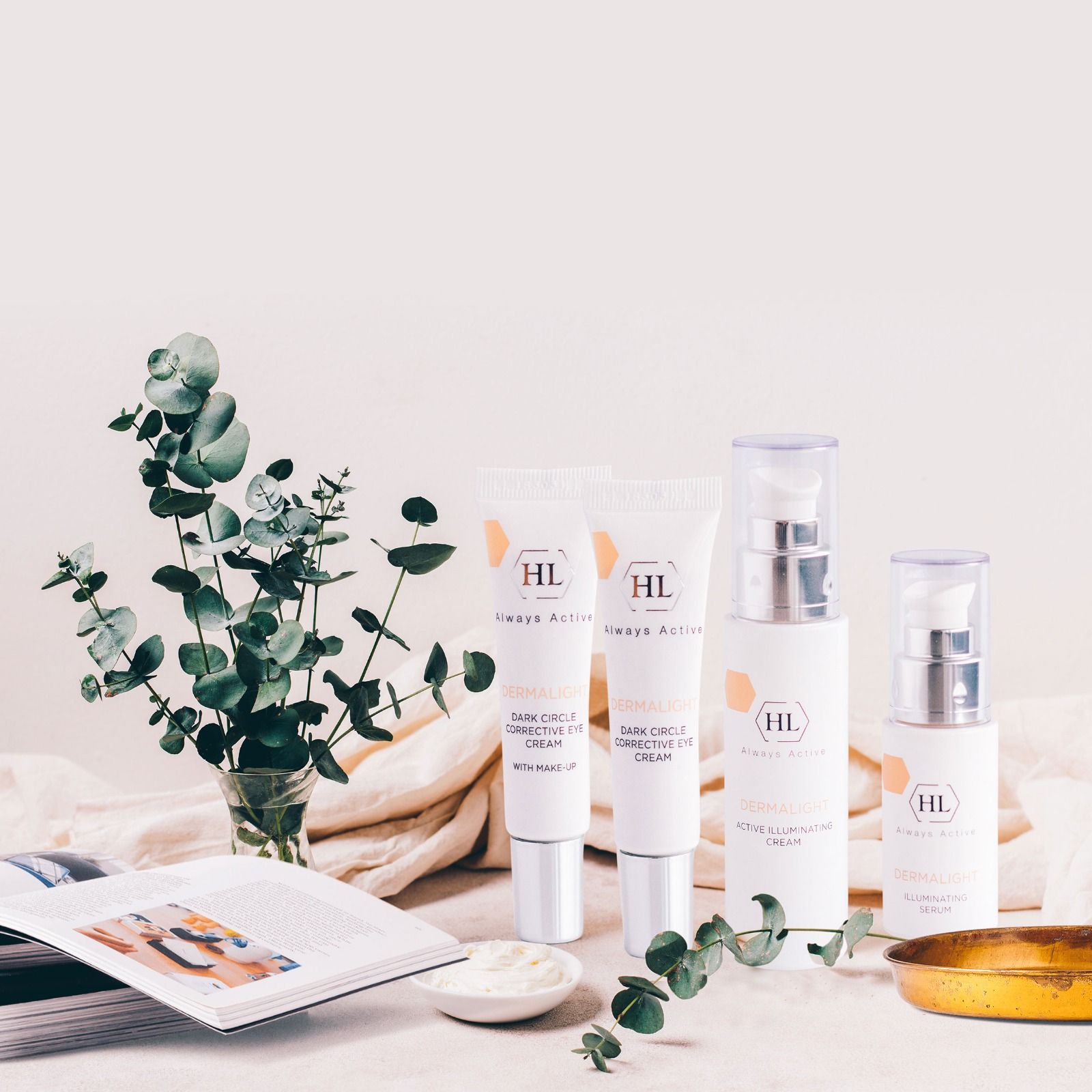
Mandelic acid
An aromatic alpha hydroxy acid with antibacterial properties, it encourages cell renewal and lightens hyper-pigmentation. As a result, the uniformity of the skin tone improves and it looks brighter and more radiant. An important advantage of mandelic acid is its suitability for sensitive skin and dark skin.
Vitamin B3 (Niacinamide)
This vitamin has a different mechanism to reduce melanin production – it does so by inhibiting the passage of melanosomes to the keratinocytes. It also helps to cleanse, moisturize, and rejuvenate the skin and boost cell growth.
Arbutin
Arbutin is derivative of hydroquinone, a substance extracted from strawberry leaves, cranberries, blueberries, and similar plants, and, similarly to the other substances mentioned, it effectively suppresses melanin production by inhibiting tyrosinase.
Alpha and beta hydroxy acids
Alpha and beta hydroxy acids enable achieving impressive results in treating sun damage and in rejuvenating the skin. These acids work by detaching the intercellular “cement” and allowing the peeling and dissolving of dead skin cells. As a result, the skin undergoes a natural regeneration process, and the peeled layers are replaced with new skin cells. In addition, these acids increase the production of collagen and elastin in the deeper skin layers, and boost the production of other important skin components such as hyaluronic acid.
Vitamin C
This water-soluble antioxidant, also known as ascorbic acid, is one of the major antioxidants in nature, and it plays a vital role in neutralizing the damages of free radicals to the skin. In addition, vitamin C plays a major role in the production of collagen and elastin and has an important potential in slowing down and even reversing sunlight related damages to the skin. Studies have shown that by applying the vitamin to the skin, it can protect the skin from sun damage and even repair the collagen and elastin fibers, repair existing damage, and reduce pigmentation spots.
This innovative and unique series is based on a complex of plant extracts, which lightens the skin, using various mechanisms. First and foremost, the complex includes tyrosinase-inhibiting components such as kojic acid, arbutin, azelaic acid, mandelic acid and others. By inhibiting the tyrosinase enzyme, the series’ preparations delay the production of melanin, thus reducing the formation of pigmentation spots. In addition, the products in the series include antioxidants such as vitamins C and E, anti-inflammatory components that help to prevent irritation and inflammation of the skin, and alpha and beta hydroxy acids that yield impressive results in the treatment of sun damages as well as skin rejuvenation. This powerful combination creates a very effective treatment, which leads to noticeable results in the short and long run: lightening pigmentation spots, reducing age-related spots, and creating a radiant and healthy skin appearance.
Kojic acid
This acid is produced by mold fungi, such as penicillium or aspergillus, and is a by-product of the fermentation process of rice-malt or the production of Sake – the Japanese rice wine. Kojic acid inhibits the melanin production by reducing the effectiveness of tyrosinase – an enzyme that accelerates and boosts melanin production during sun exposure.
Azelaic acid
Azelaic acid is also a tyrosinase inhibitor, and when combined with kojic acid, it helps to achieve faster results in suppressing melanin and reducing spots.
-
Sale!
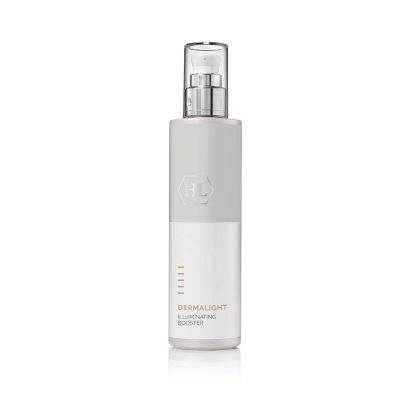
DERMALIGHT ILLUMINATING BOOSTER 100ml
56,35 €Original price was: 56,35 €.42,26 €Current price is: 42,26 €. Add to cart -
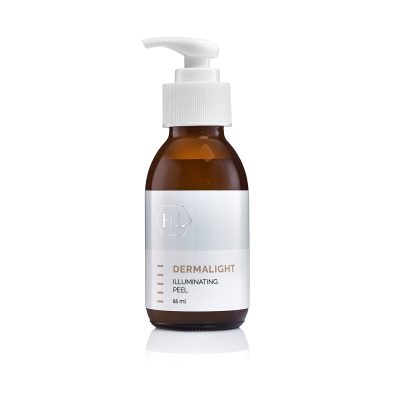
DERMALIGHT ILLUMINATING PEEL 85ml
84,03 € Add to cart -
Sale!
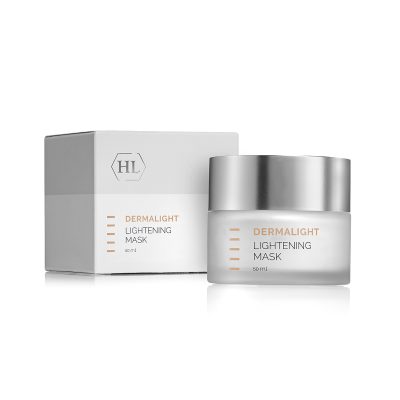
DERMALIGHT LIGHTENING MASK 250ml
126,70 €Original price was: 126,70 €.76,02 €Current price is: 76,02 €. Add to cart -
Sale!
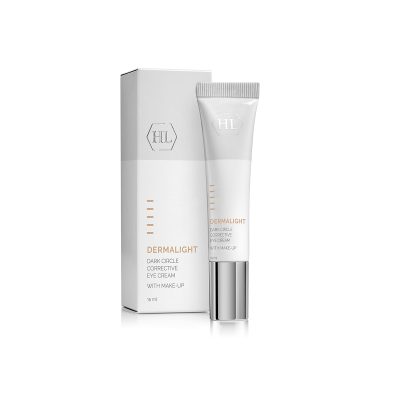
DERMALIGHT CORRECTIVE EYE CREAM – WITH DEMI MAKE-UP 15ml
67,88 €Original price was: 67,88 €.50,91 €Current price is: 50,91 €. Add to cart